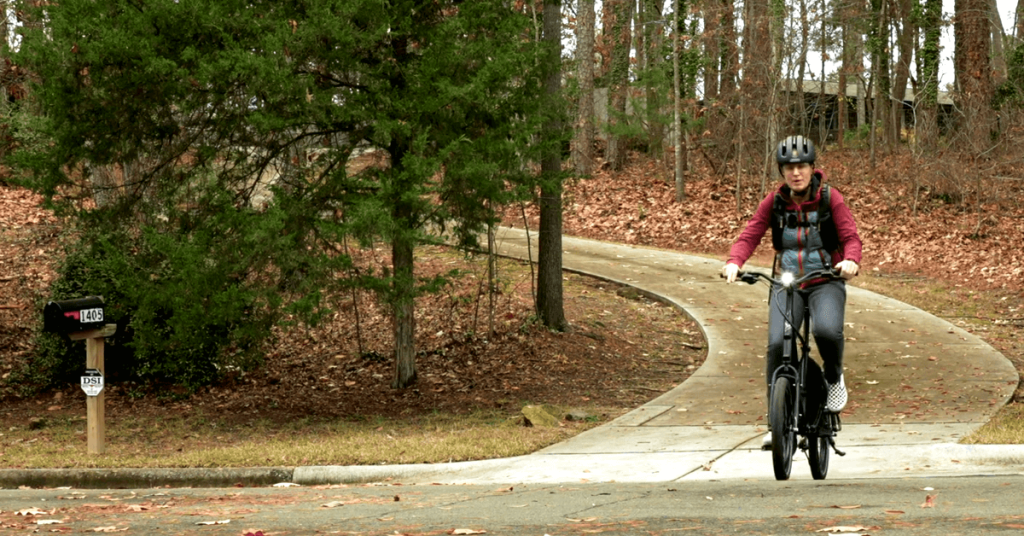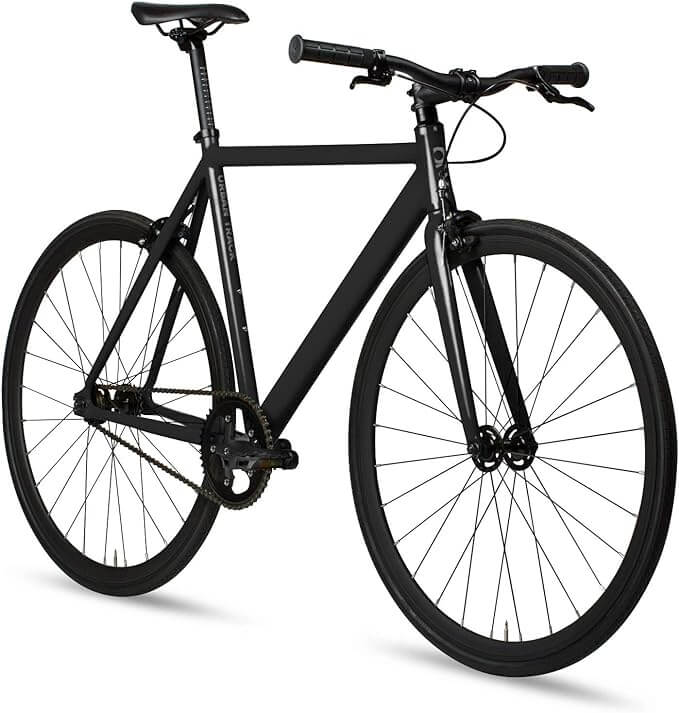Riding a bicycle on busy streets is challenging. Did you know that in several regions of the US, such as New York and South Carolina, cyclists are required by law to install bells on their bikes? This blog post aims to provide a detailed guide on bike bell etiquette, the untold rules-of-bike-bell-etiquette every cyclist must know, bike bell etiquette, which will help ensure that cycling is safer and more courteous for everyone. Are you ready to learn how to use your bike bell for smoother rides?
KEY TAKEAWAYS
Bicycle bells are essential for improving safety on the road as they alert drivers, pedestrians, and other cyclists of your presence, thus preventing accidents. Bike bells allow you to communicate with other road users and indicate when you are approaching or about to pass them quickly and effectively.
To use a bike bell properly, you should signal your presence by using it in advance when approaching pedestrians, slower cyclists, or vehicles on shared paths or trails. However, it is essential to avoid startling or upsetting others with excessive bell usage and to consider alternative communication methods when necessary.
In some situations, it may be best to refrain from using your bike bell, for example, in quiet residential areas or parks where the sudden sound may startle or upset pedestrians. Additionally, if clear visibility or alternative communication options are already available, using a bell may not be necessary.
It is essential to understand the significance of using bicycle bells while cycling. Bicycle bells are not just an accessory but play a significant role in enhancing safety on the road. By ringing the bell, cyclists can communicate with other road users, alert them of their presence, and avoid surprises.
The use of bicycle bells is a simple but effective way to enhance safety on the road. By swiftly ringing the bell, cyclists can alert drivers, pedestrians, and other cyclists of their presence, which reduces the risk of mishaps or collisions.
It is essential to understand that sudden movements due to an unawareness of an approaching cyclist can lead to severe accidents. Therefore, safety should be a priority for all cyclists, irrespective of differences in biking culture and local laws.
Bicycle bells also play a crucial role in enhancing communication with other road users. They are an effective way to communicate with pedestrians, fellow cyclists, and motorists. By ringing the bell, cyclists can notify other road users of their approach without startling them. The ringing sound of a bicycle bell is easily recognizable and helps communicate one’s presence clearly and timely. This is especially important when sharing paths or trails with pedestrians unaware of a cyclist’s approach.
While some argue that verbal communication can be more effective than using a bicycle bell, it is essential to note that there are situations where speaking may not be possible or appropriate. A loud and clear ring from a bell can cut through ambient noise and help prevent accidents or collisions by catching the attention of those around you. Furthermore, it provides a consistent signal universally understood by all road users.
Therefore, it is recommended to use a bicycle bell when cycling on shared roads or trails to ensure the safety of all road users.
Avoiding Surprises
A bicycle bell is one effective way to prevent accidents and avoid surprising other road users. By ringing your bell in advance, you can alert pedestrians, slower cyclists, and even motorists of your presence, giving them enough time to react accordingly. This helps create a safer environment for everyone on the road by ensuring that others know your approach and can make appropriate adjustments.
Proper Usage of Bicycle Bells
To ensure safety and effective communication, using a bicycle bell properly in various situations is essential. Use the bell in advance to signal your presence when approaching pedestrians, slower cyclists, or vehicles. When passing by on shared paths or trails, ring the bell to alert others of your company. However, be mindful not to startle or agitate others with unnecessary bell usage and consider alternative communication methods such as verbal cues, hand signals, or eye contact when appropriate.
Remember that proper usage of a bike bell helps create a polite cycling environment and prevents accidents on the road.
Bicycle bells are crucial for enhancing safety on the road. One important aspect of proper bike bell usage is to ring it in advance to signal your presence. Doing so alerts other pedestrians, cyclists, or motorists that you’re on your way. This helps prevent accidents and enables others to make space for you on shared paths or trails. The sound of the bicycle bell serves as a warning signal, alerting people around you about your presence and ensuring smoother navigation for everyone involved.
When cycling on shared paths and trails, using your bicycle bell as a form of communication is essential. By ringing it in advance, you can alert other cyclists and pedestrians to your presence, helping to prevent any potential accidents or collisions. It allows others to be aware of you coming from behind and gives them time to adjust their path accordingly.
Using your bike bell also shows respect for those around you, particularly in crowded areas with limited visibility. It is polite to let others know you are approaching so they can move aside or make space for you to pass safely. However, not everyone may hear the sound behind them, so it’s important to use visual cues like hand signals or eye contact when passing others on shared paths and trails.
This ensures better communication between all road users and helps maintain a friendly atmosphere while enjoying outdoor activities.
When passing pedestrians or slower cyclists, it is essential to use your bicycle bell to alert them to your presence. By ringing it in advance, you give them ample time to move aside or adjust their trajectory on the path or trail. It is considered common courtesy and good cycling etiquette to ensure that others know your approach while passing by using your bike bell.
However, there are certain situations where it may be best to refrain from using your bicycle bell. Curious to know when those instances are? Keep reading!
IN CERTAIN SITUATIONS WHERE IT MAY STARTLE OR AGITATE OTHERS
Using a bicycle bell is generally considered polite and effective for alerting others to your presence on the road. However, some situations where using a bike bell may not be appropriate.
For example, in quiet residential areas or parks where people enjoy peaceful surroundings, the sudden sound of a ringing bell might startle or agitate pedestrians. Similarly, if you’re approaching someone from behind at a fast pace, a bike bell’s abrupt noise could frighten them.
In these cases, you must gauge the environment and use your judgment to determine whether it’s more appropriate to slow down and pass without ringing your bell or give a friendly verbal warning instead.
Using a bicycle bell to alert others of your presence may be unnecessary if there is already clear visibility or alternative communication options. For instance, using a bell on an open road with no obstructions, where you can clearly see and be seen by other road users, may not be essential. Similarly, if you are riding in a group and can communicate effectively verbally or through hand signals, using a bell might not be required. It’s crucial to remember that while bells can be effective for alerting others to your presence, they should not replace other means of communication when those options are available and appropriate.
Apart from using a bike bell, there are several other effective communication methods for cyclists. Verbal communication can be helpful when conveying more detailed information or warnings. Hand signals are also essential for indicating turns or stops to motorists and other cyclists. Additionally, making eye contact with others on the road can help establish clear communication and ensure everyone knows each other’s intentions.
Please continue reading to learn more about these communication methods and how they contribute to a safer cycling experience!
Bike bell etiquette involves verbal communication, hand signals, and eye contact. Although a bell is an effective way to alert others of your presence, using your voice to communicate is sometimes necessary. When approaching pedestrians or slower cyclists from behind, it is helpful to say “passing on your left” or give a friendly warning to avoid surprises and ensure everyone’s safety.
Clear verbal communication is crucial for promoting positive interactions between cyclists and other road users in noisy or busy environments where a bell may not be audible enough.
Hand signals are another essential part of bike bell etiquette. Cyclists can use hand signals to indicate their intentions to other road users and avoid accidents. Extending your left arm straight out signals a left turn while bending it at the elbow with your forearm pointing upwards indicates a right turn. Placing your left arm downward with your palm facing backward signifies that you plan to stop or slow down. These simple yet effective hand signals not only alert motorists and pedestrians of your intended movements but also promote a sense of shared responsibility and understanding on the road.
Maintaining eye contact is also crucial when it comes to bike bell etiquette. Making eye contact with pedestrians or fellow cyclists can help establish a visual connection and ensure they know your presence on the road. It reinforces the sound of the bell and provides an additional layer of communication that allows you to gauge their awareness and adjust your approach accordingly. Eye contact also allows for quick non-verbal communication, such as acknowledging their understanding or your intentions to pass safely.
Conclusion
These are some untold rules of bike bell etiquette every cyclist must know, practicing proper bike bell etiquette is essential for a safe and harmonious cycling experience. By using your bicycle bell correctly and employing alternative communication methods when necessary, you can effectively communicate with other road users, avoid surprises, and enhance overall safety. Remember always to be considerate of others when deciding to ring your bell or use alternative communication methods. Happy cycling!
FREQUENTLY ASKED QUESTIONS
WHEN SHOULD I USE MY BIKE BELL?
It would help if you used your bike bell to alert pedestrians, other cyclists, or motorists to your presence when passing or overtaking them on the road or shared paths.
HOW DO I PROPERLY USE A BIKE BELL?
To use a bike bell properly, approach the person you want to signal from behind and ring the bell clearly and politely. It’s important not to startle or intimidate others with an aggressive or continuous bell ringing.
ARE THERE ANY SITUATIONS WHERE I SHOULDN’T USE MY BIKE BELL?
While it’s generally recommended to use a bike bell in most situations, there may be instances where it’s inappropriate or unnecessary, such as when riding in designated car-free zones, in quiet residential areas during nighttime hours, or when approaching someone with visual impairments.
WHAT ARE SOME ALTERNATIVE WAYS TO ALERT OTHERS IF I DON’T HAVE A BIKE BELL?
If you don’t have a working bike bell, you can use verbal cues such as saying “excuse me” or “passing on your left,” ensuring your voice is loud enough for others to hear. You can also make eye contact and give hand signals if necessary for added communication.







